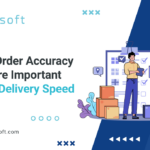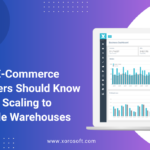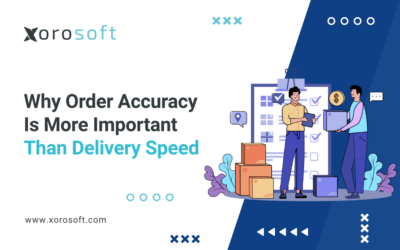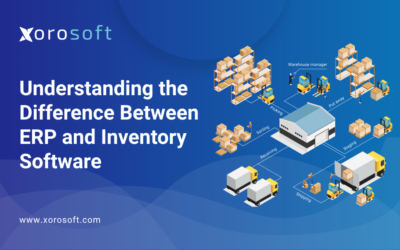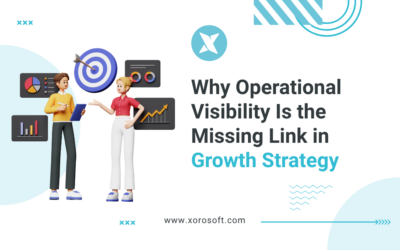
Why Growing DTC Brands Need Smarter Operations
For most founders, growth brings both excitement and stress. As sales rise, operations often lag behind. An ERP for DTC growth becomes essential because it brings every part of your business — orders, inventory, and finance — into one streamlined system.
Instead of reacting to daily issues, you can finally focus on strategic growth. Therefore, choosing the right ERP is not about software; it’s about freeing your time, energy, and attention.
Common Challenges That an ERP for DTC Growth Can Solve
When brands scale quickly, their systems rarely keep up. Although spreadsheets and small integrations once worked, they soon create delays and confusion. Moreover, disconnected tools cause missed opportunities and expensive mistakes.
Typical issues include:
-
Inventory mismatches between Shopify, Amazon, and wholesale.
-
Manual reconciliations that slow month-end closes.
-
Fragmented data leading to inconsistent decisions.
-
Reports that arrive too late to act on.
Ultimately, these inefficiencies drain energy from growth. However, a well-chosen ERP for DTC growth connects all data flows and removes that friction.
What to Expect from the Best ERP for DTC Growth
A great ERP shouldn’t overwhelm your team. Instead, it should simplify how you operate and help you scale smoothly.
The right system will:
-
Sync data automatically across channels.
-
Automate repetitive workflows such as order routing and invoicing.
-
Present one accurate truth for every department.
-
Provide real-time insight into metrics such as pick accuracy and cash conversion.
Conversely, avoid overly complex, enterprise-heavy platforms that slow you down. In short, a modern ERP acts as your brand’s operational core — adaptable, fast, and built for the realities of DTC commerce.
Clarify Your Brand’s Growth Vision Before Choosing an ERP
Before evaluating any ERP, define what success means for your brand. For example, do you want to double sales without doubling headcount, or reduce stockouts across every channel?
List your biggest time drains and process bottlenecks. Once you map them, you’ll know exactly which ERP features matter most. As a result, your choice becomes strategic rather than reactive.
Build a Single Source of Truth with ERP for Shopify Brands
Every thriving DTC company depends on accurate data. Because of this, a unified system that synchronizes Shopify, fulfillment, and accounting is non-negotiable.
Audit where data currently breaks. Then connect those points with your ERP to ensure real-time synchronization. Consequently, all teams will work from the same numbers — improving trust, speed, and decision-making.
Accelerate Fulfillment for Happier Customers
Speed and accuracy define a great DTC experience. With automation built into your ERP, orders route instantly to the right warehouse and ship faster than ever.
When fulfillment runs smoothly, customer satisfaction and repeat purchase rates rise. Therefore, investing in fulfillment automation delivers both operational and revenue gains.
Gain Cash Flow Clarity Through Real-Time Data
Growth is easier when you can see cash movement in real time. Integrating your ERP with accounting software ensures that every sale and expense appears instantly.
As a result, finance teams can monitor working capital daily and prevent costly surprises. Improved visibility ultimately strengthens both profitability and peace of mind.
Forecast and Replenish with Confidence
Accurate forecasting keeps your shelves full without overstocking. Use ERP analytics to predict demand and automate reordering when inventory reaches preset thresholds.
This proactive approach reduces carrying costs and prevents missed sales. In other words, your ERP becomes a quiet but constant engine of stability for your DTC growth.
Choose a Scalable ERP for Shopify and Omnichannel Brands
Scalability matters more than feature count. Select an ERP for Shopify brands that grows with your operations instead of replacing it later.
Start with core modules such as inventory and order management. Then, as your needs expand, add advanced forecasting, CRM, or reporting features. Because of its modular nature, you’ll see value within weeks — not months.
Empower Teams Through Simplicity
A system only succeeds when people use it confidently. Therefore, involve your team early. Train them on dashboards, alerts, and reports to ensure comfort and autonomy.
When staff can self-serve information, they act faster and make fewer errors. In turn, you’ll see fewer check-ins, smoother communication, and stronger morale.
Example: From Chaos to Control with ERP
A fast-growing skincare brand faced endless reconciliation issues across Shopify and Amazon. Their small team used five separate tools and spent ten days closing books each month.
After adopting an ERP for DTC growth, their operations changed completely. Inventory accuracy improved to 98 percent, order cycle time dropped by 40 percent, and month-end close took only two days.
Most importantly, the founder stopped firefighting and returned to product development and marketing — the real drivers of brand success.
A Five-Day Plan to Select Your ERP
Instead of “Day 1–Day 5,” here’s a more natural version that removes repetitive phrasing:
Map Your Challenges (Day 1): Identify your top process bottlenecks and time-consuming tasks.
Define Measurable Success (Day 2): Choose KPIs such as pick accuracy or cash conversion cycle.
Compare Top Platforms (Day 3): Review the best ERP systems for DTC growth on G2.
Test Shopify Integration (Day 4): Try Xorosoft ERP in a sandbox store to see real-time sync.
Make the Final Decision (Day 5): Gather feedback from finance, ops, and fulfillment, then agree on one solution.
Each day builds on the previous one, so by the end of the week you’ll have clarity and consensus.
Measure the Impact of Your ERP for DTC Growth
Once your ERP is live, pay attention to key outcomes. You’ll likely notice that pick accuracy rises, order cycle time shortens, and cash flow improves. Moreover, your team’s workload will decrease as automation replaces manual steps.
These improvements compound quickly, turning operational consistency into competitive advantage.
Bring Calm Back to Your Brand with ERP for DTC Growth
Adopting an ERP for DTC growth gives you the calm confidence to scale sustainably. With every process connected and visible, operations stop being a source of anxiety.
You can redirect your focus to creative strategy and customer experience — the elements that truly build brand equity.
To take the next step, Book a live demo today. You’ll see firsthand how the right ERP can transform operations and unlock your brand’s full growth potential.
